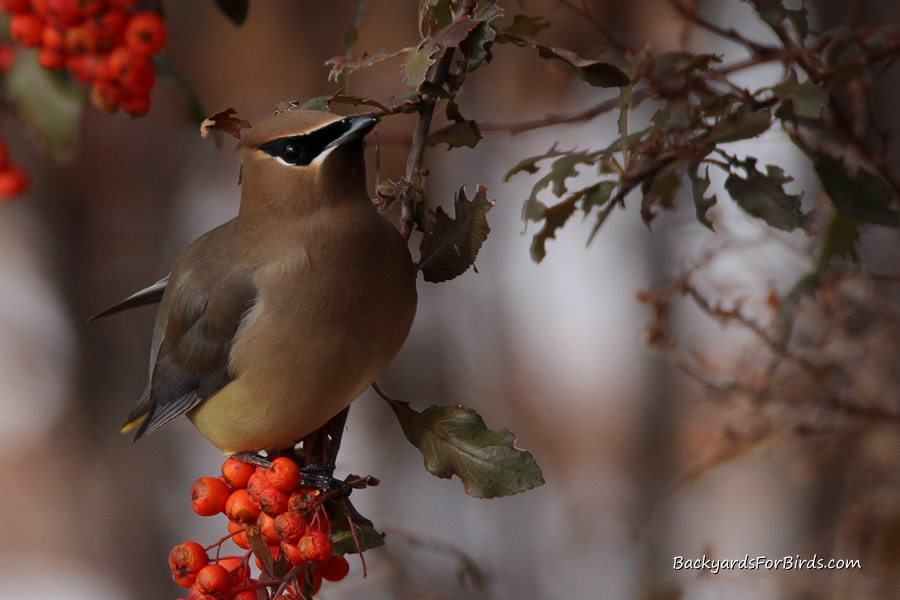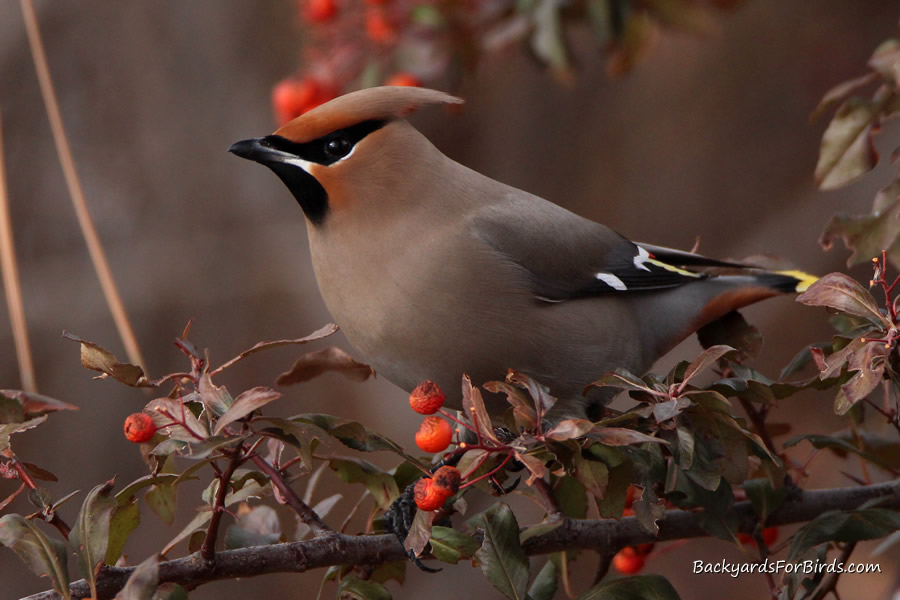When it comes to backyard plants, I have what someone could describe as a love-hate relationship with the pyracantha bush, also commonly referred to as the scarlet firethorn.
And for several decades, ever since I was a teenager having to clip and cut back this most unruly and prickly bush at my grandmother’s house each summer, my feelings about the pyracantha have definitely been skewed, maybe even lopsided to be honest, towards the hate side of the spectrum until, well, a few days ago when my whole attitude suddenly changed about this particular plant.
It’s amazing what a few cedar waxwings in the yard will do for that, isn’t it?
My hatred for this bush was not without reason, mind you, as the Pyracantha coccinea is a quite thorny and unforgiving bush that can easily overgrow if not kept under control with regular and somewhat aggressive clippings and cutbacks.
That’s why I have hated it for so long, the bushes planted at my grandmother’s house when my dad was a kid were put there for one reason and one reason only, a large privacy fence so it was mostly left to grow on its own and after 50 years or more, a long, tall, gangly privacy fence it certainly was and then some.
A few years ago from being tired of trying to maintain this foreboding yard barrier, I took upon myself the undertaking of ripping out these unchecked nightmares to plant something new and a little more maintenance friendly.
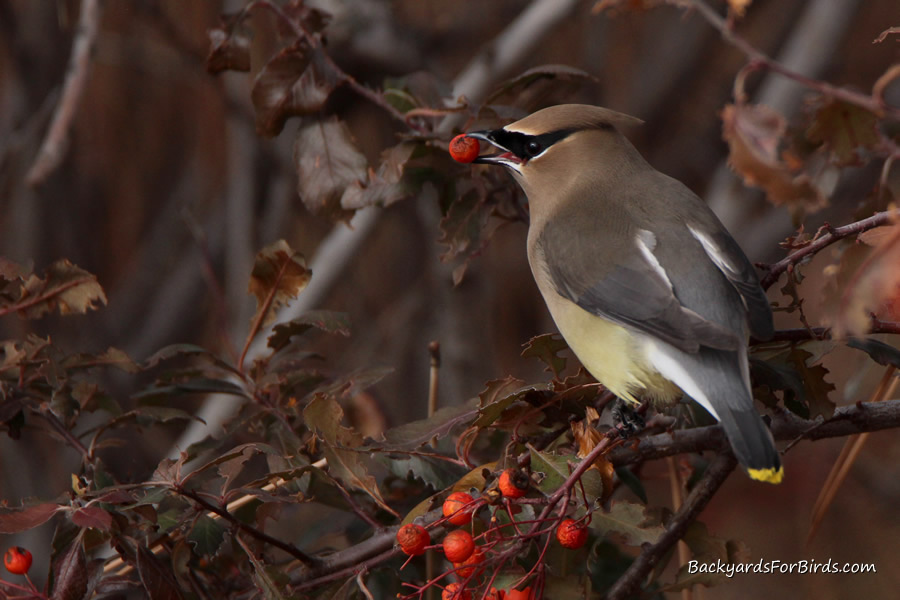
But I am now second-guessing this decision because I have just learned from watching both cedar and Bohemian waxwings the other day feed on berries from a lone surviving pyracantha bush in my front yard that both species of waxwings do benefit from this most thorny of plants.
Learned from my own backyard birdwatching observations, both cedar and Bohemian waxwings do feed upon pyracantha berries during the winter months.
In the front yard amongst some snowberry and other bushes used for a hedge of sorts, a small and solitary pyracantha bush re-sprouted after being cut down a few years ago.
If you don’t pull out the roots, this is one bush that will most likely keep growing but, honestly, I am glad it did in this particular case.
As I was sitting in the living room the other day editing some pictures for one of my blogs, I could hear what sounded like hundreds of birds suddenly showing up and taking over the yard.
The vocalization was so intense I had to put the computer down and investigate the commotion outside.
What I found was hundreds of both cedar and Bohemian waxwings had spread themselves over this corner of the yard and neighboring trees with many of them coming down to the small, lone pyracantha bush in my front yard to feast on the winter berries.
Naturally, being a photographer I quickly grabbed my camera and snapped the images posted in this blog post.
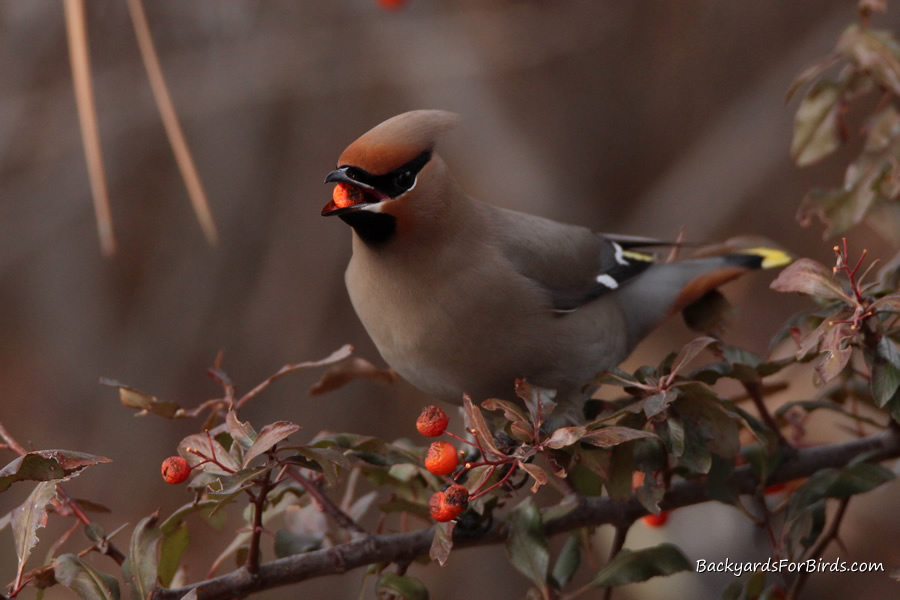
I had heard waxwings eat pyracantha berries during the winter but I had never seen it myself until now, despite the numerous times I have had waxwings pay me a visit.
Waxwings eat berries and during winter when most other berry bushes have already given up their fruit, pyracantha bushes are still offering waxwings and other berry-eating birds a late-season meal.
Pyracantha, an ornamental shrub not native to the United States but originating somewhere around central and southern Europe, can grow quite tall, between 6 and 18 feet in height if left unmanaged to grow on its own.
I can certainly attest to this as the large swath I had to remove a few years back was easily 14 feet tall when it was finally cut out.
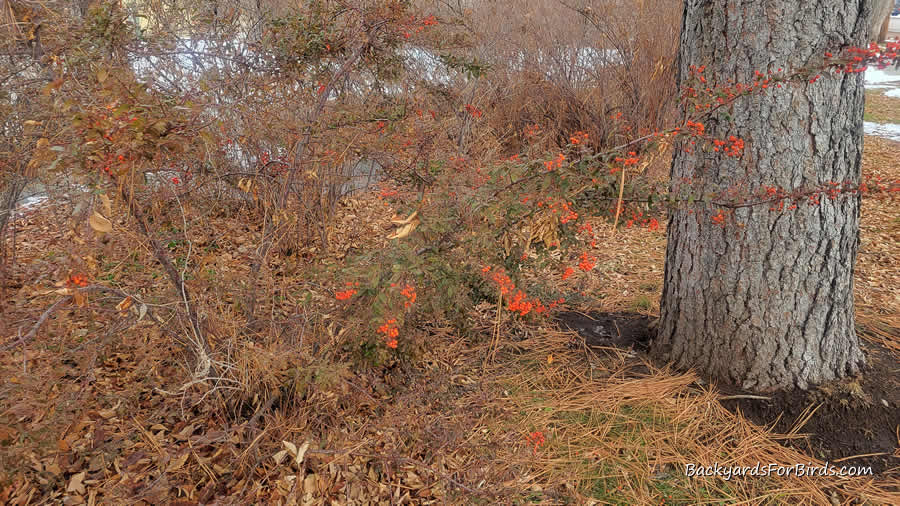
There are still a couple of small stands of pyracantha left in my yard and after the show I was treated to a few days ago, I will now maintain and let them grow solely for the waxwings to come feed on during the winter months.
I just won’t let them get out of hand and overgrow as the previous bushes did but the pyracantha bush now has a home in my yard, well, for now at least as I am still not a fan of thorny bushes but if they bring waxwings to my yard how am I to argue with that.
If you love having birds, bees, butterflies, and other creatures in nature in the backyard like I do, I offer you to head on over to our subscribe page and sign up for email notifications for future blog posts.
We also have a small but growing channel on YouTube we offer you to take a look at where we will be posting videos about enhancing and enjoying our backyards for birds and other creatures in nature.
